
Quick Summary
This analysis tackles the urgent question: Does economic growth have to come at the cost of increased emissions, or can we achieve more value with less environmental impact? Drawing on data from the International Energy Agency, we examined how economic productivity and emissions have interacted across various industries and countries over the past two decades.
Here’s what we found:
- Higher economic value often leads to higher emissions, but this link varies significantly between industries.
- Industries like construction can create substantial economic value with relatively low emissions, while sectors like metal production are much more emission-intensive.
- Efficiency is improving: Many industries are now producing more value with fewer emissions than in the past.
However, despite these efficiency gains, total global emissions are still on the rise. This underscores the need for a strategic shift towards cleaner industries and further improvements in efficiency. With the right approach, we can grow our economies without worsening the climate crisis, offering a hopeful path forward.
Stuck Between a Rock and a Hard Place: Can We Create More Value with Less Emissions?
The world faces a critical dilemma: Should we continue to grow the economy, thereby increasing our living standards, or should we curb consumption to avert catastrophic global warming? This is one of the most urgent questions of our time.
On one hand, nearly every economist and politician will tell you that economic growth is essential. It creates jobs, fosters social mobility, drives technological advancement, and generally improves people’s quality of life. But economic growth comes with a cost: it typically requires producing more goods, which often leads to higher emissions. This raises the pressing question: Can we create more value with less emissions?
To explore this, we’ll break the issue down into three key questions:
- Does generating economic value necessarily mean generating more emissions?
- Which industries emit the most and least energy per unit of value produced?
- How has the relationship between economic value and emissions evolved over time?
1. Does Generating Economic Value Mean More Emissions?
The argument is straightforward: Economic growth comes from producing more goods, which requires energy, often generated by burning fossil fuels. Burning fuel releases emissions, so economic growth historically implies increased emissions.
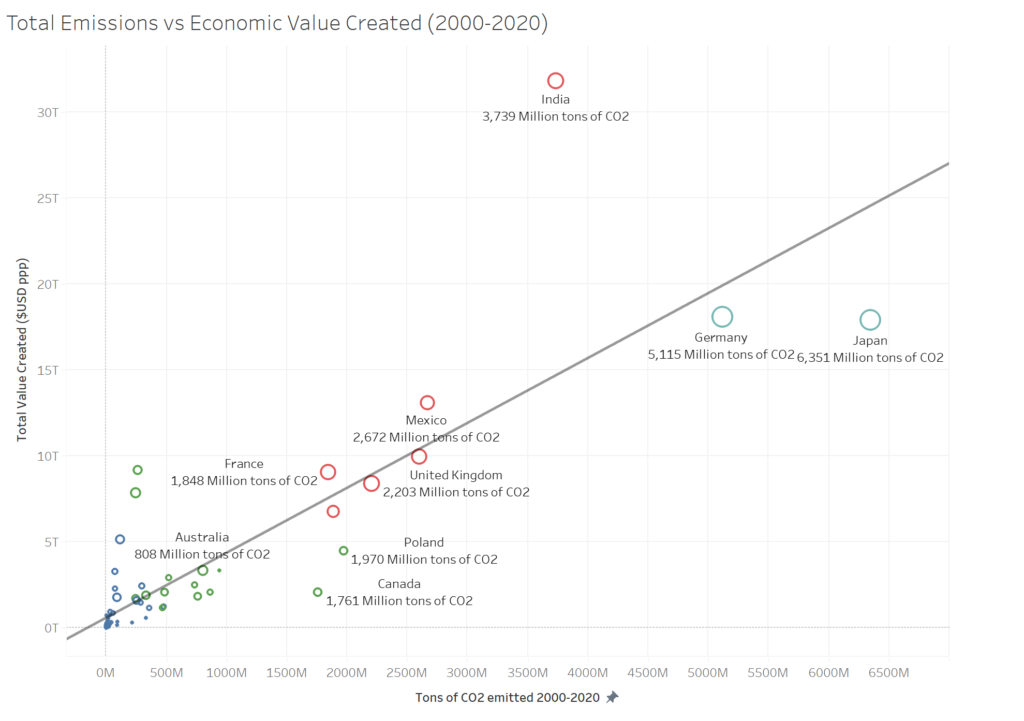
Chart 1: Economic Value vs. Emissions by Country (2000-2020)
Sources: International Energy Agency, International Monetary Fund
This chart compares the economic value created by a set of countries with the emissions they produced over 20 years. Each circle represents a country, with its size corresponding to the economic value generated. The trend line shows that higher economic value generally correlates with higher emissions, but with some notable exceptions.
Indeed, data from the International Energy Agency (IEA) confirms this trend. A chart comparing economic value and emissions across countries from 2000 to 2020 shows a clear pattern: countries that create more value tend to emit more. However, there are notable exceptions, like India, which has a lower emissions-to-value ratio. This suggests that the composition of a country’s economy might affect its emissions efficiency, leading us to our next question.
2. Which Industries Emit the Most and Least Per Unit of Value?
When we break down emissions by industry, a different picture emerges. Some industries generate significant economic value without proportionately increasing emissions.
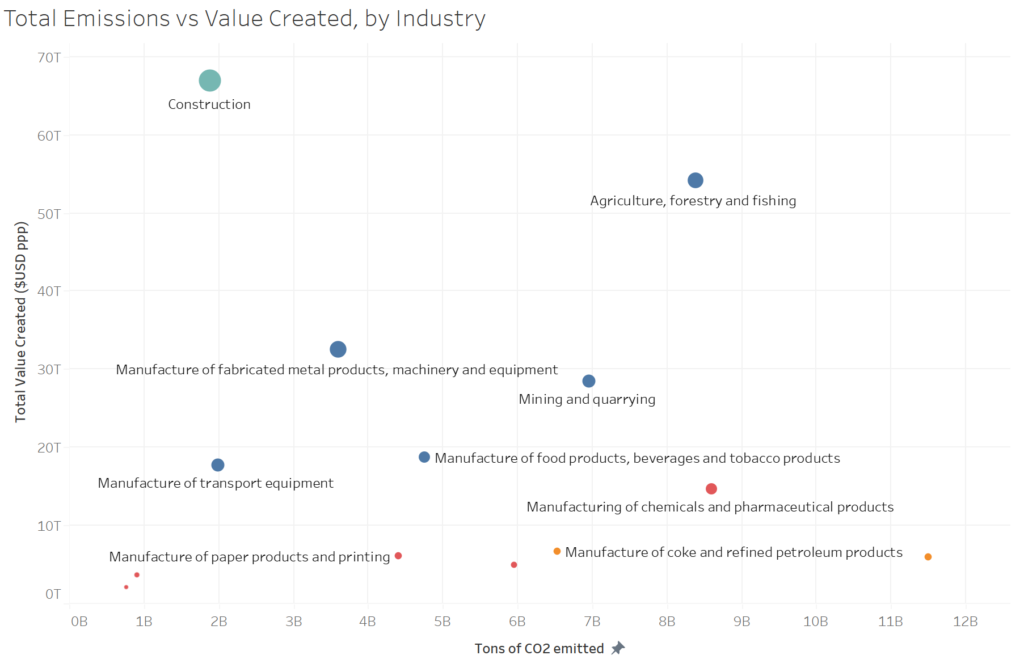
Chart 2: Economic Value vs. Emissions by Industry
Sources: International Energy Agency, International Monetary Fund
This chart maps different industries according to the economic value they create and the emissions they generate. The size of each point reflects the economic value produced by the industry. The chart reveals which industries are more efficient and which are more emission-intensive.
For instance, the construction industry creates a high amount of value with relatively low emissions, making it one of the least emission-intensive sectors. On the other hand, industries like chemical manufacturing and basic metal production produce significant emissions relative to their economic value, identifying them as high-emission sectors.
These findings suggest a potential path forward: economic growth could be sustained, or even enhanced, by shifting focus from high-emission industries to cleaner, less emission-intensive ones.
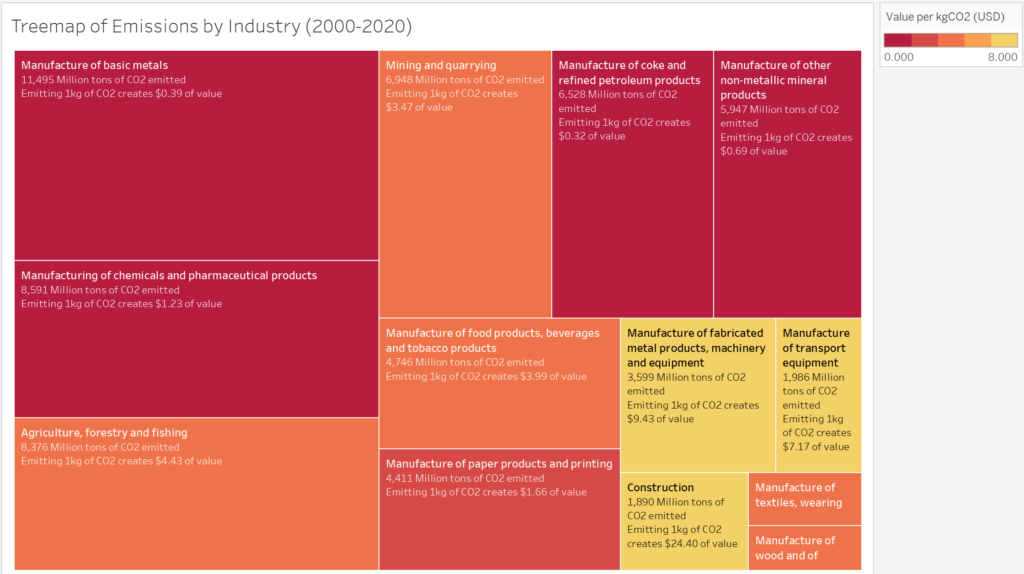
Chart 3: Treemap of Industry Emissions and Efficiency
Sources: International Energy Agency, International Monetary Fund
This treemap visualizes the total emissions generated by each industry over 20 years. The size of each block represents the total emissions, while the color indicates emissions efficiency—redder tones mean higher emissions per unit of value created.
A treemap visualization reinforces this, showing that industries like construction, despite their high value creation, have much lower emissions compared to others.
3. How Has the Relationship Between Value and Emissions Evolved?
Looking at the evolution of this relationship over the past two decades, we see both promising and concerning trends. On the positive side, many industries have become more efficient, producing more economic value with fewer emissions.
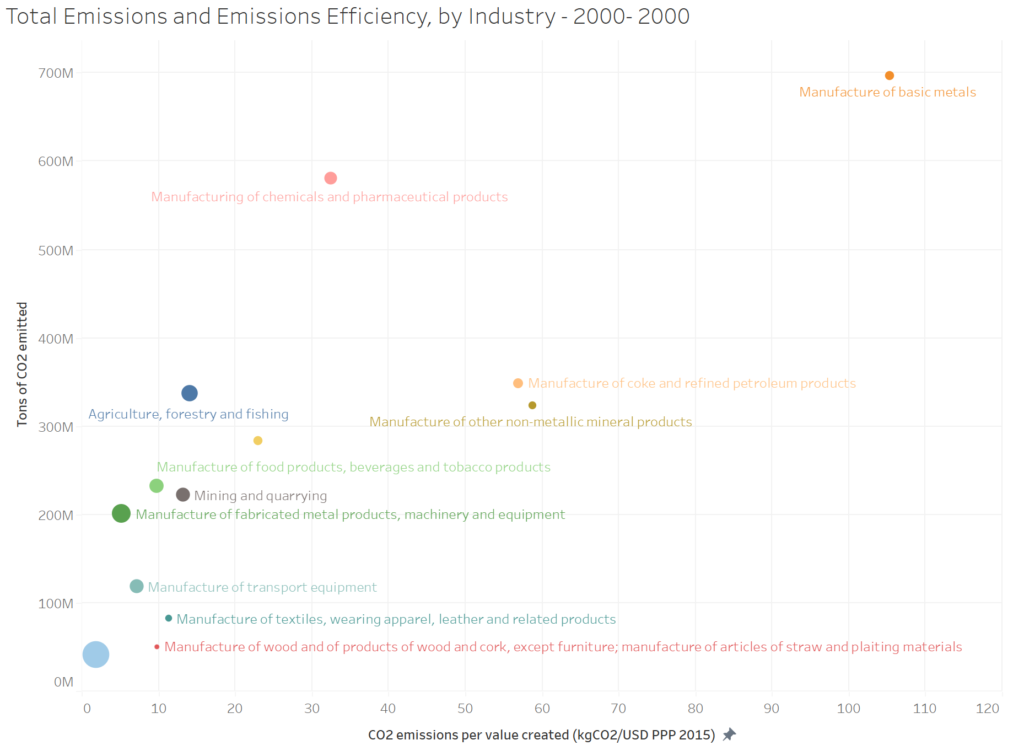
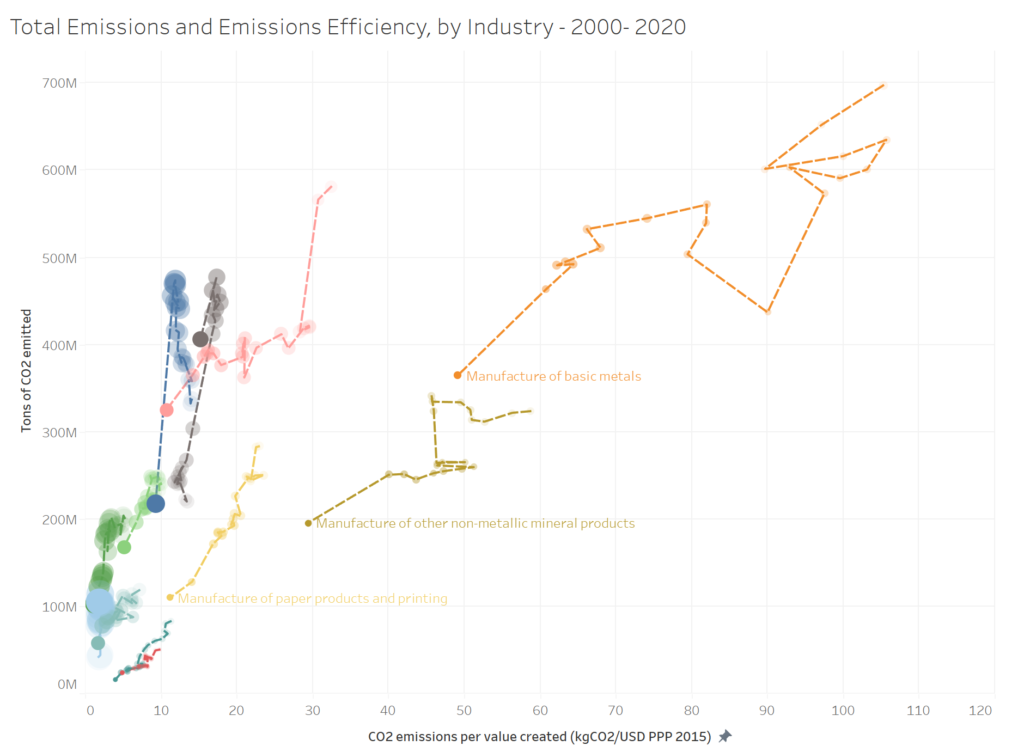
Charts 4a and 4b: Evolution of Industry Emissions and Efficiency (2000-2020)
These charts tracks how emissions and efficiency have changed for various industries over 20 years. Left is emissions in 2000, right shows changes until 2020. The trails show how each industry has moved, indicating improvements or declines in emissions efficiency.Recommended: see the full dynamic chart
Sources: International Energy Agency, International Monetary Fund
However, despite these efficiency gains, total global emissions have continued to rise. This highlights a critical challenge: while we are getting better at producing value with less carbon, overall emissions are still increasing.
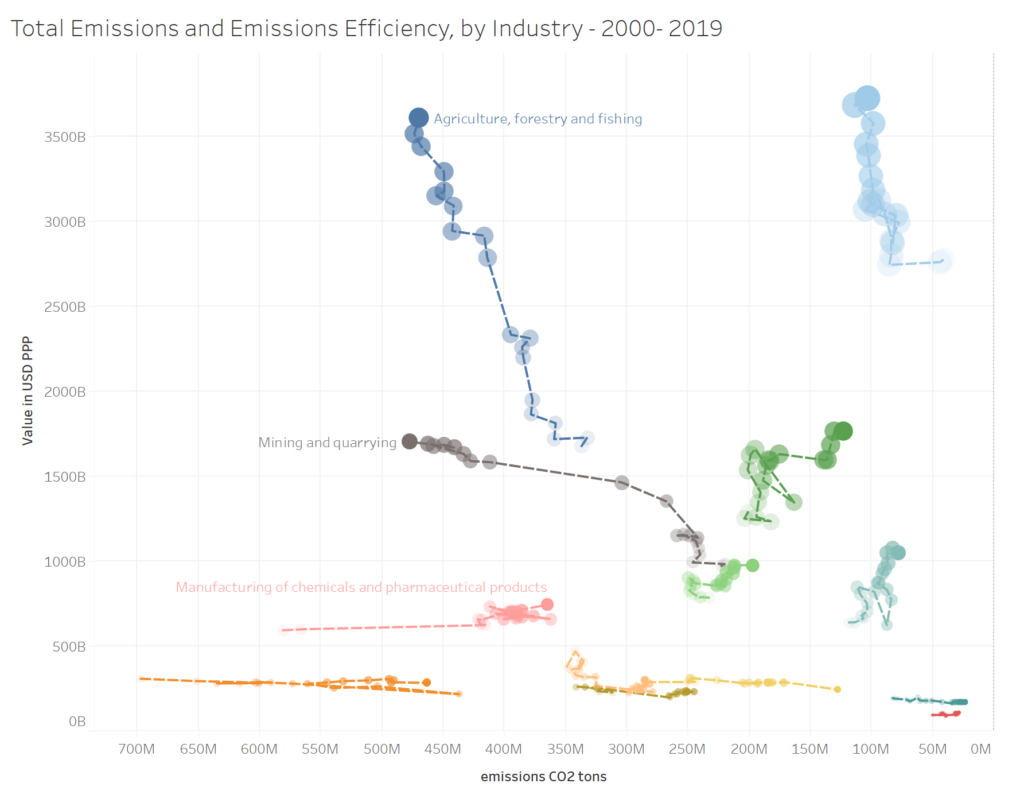
Chart 5: Evolution of Value Created and Total Industry Emissions 2000-2020
Sources: International Energy Agency, International Monetary Fund
Conclusion
This analysis highlights a few key points:
- Historically, economic growth has been linked with increased emissions, but this relationship is not uniform across all sectors.
- Certain industries, like construction, can generate significant economic value with relatively low emissions, offering a model for sustainable growth.
- While industries are becoming more efficient, the rise in total emissions suggests that efficiency alone is not enough—we also need to reduce emissions in high-impact sectors.
What can you do?
- Consume less: Reducing consumption is the most direct way to lower emissions.
- Be mindful of energy-intensive goods: Focus on reducing consumption in high-emission areas.
- Support clean industry initiatives: Advocate for and support policies and technologies that reduce emissions in high-impact industries.
By understanding the dynamics between economic growth and emissions, we can make more informed decisions to foster a sustainable and prosperous future.
Let’s continue this conversation and work towards solutions that balance economic growth with environmental responsibility. Let me know what you think by leaving a comment!

